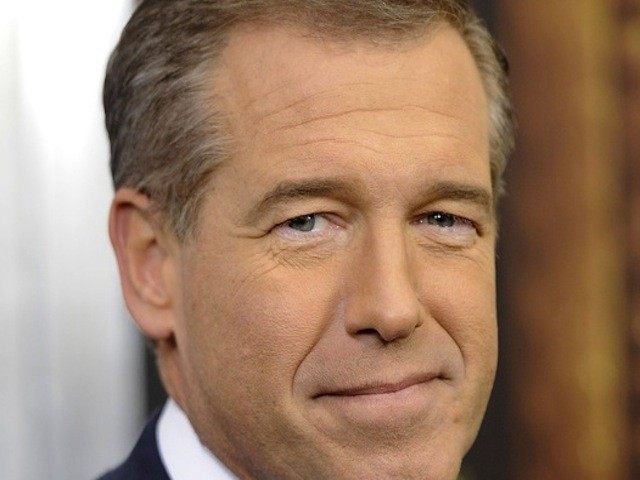The Brian Williams’ stolen valor scandal has moved to page A1 of the New York Times and in the worst possible way. The Times is questioning the veracity of the NBC anchor’s on-air apology during Wednesday’s edition of the NBC Nightly News. “On Thursday [after his apology],” The New York Times writes, “his real problems started.”
In his apology, Mr. Williams said that he had been on a different helicopter, behind the one that had sustained fire, and that he had inadvertently “conflated” the two.
Williams’ claim Wednesday night that he was “in a following aircraft” gives the false impression that he was right behind or in the formation with the Chinook that was in fact shot down. The truth, according to at least 4 military witnesses, is that he was at least 30 minutes behind. Therefore he did not even see the RPG hit. Therefore there was nothing to “conflate.”
It is hard to argue that putting yourself into an event you witnessed is conflating — though some like Politico’s Dylan Byers are trying to make that case. If Williams didn’t even see the hit, if he was 30 minutes behind the chopper that was hit, no rational person can claim that’s conflating. It’s lying. And that means his apology was wildly misleading.
This is where things get interesting. The New York Times interviewed two veterans claiming to be the pilots of Williams’ chopper. The story they tell is vastly different from a pilot interviewed Thursday by two CNN anchors. Here’s the New York Times version:
Mr. Summerlin [the pilot of the chopper shot down by the RPG] said that Mr. Williams’s helicopter was part of a different mission and at least 30 minutes behind theirs. His account is supported by two of the pilots of Mr. Williams’s own helicopter, Christopher Simeone and Allan Kelly, who said in an interview that they did not recall their convoy of helicopters coming under fire. After the initial piece aired on NBC in 2003, Mr. Summerlin and his crew went looking for reporters on their base in Kuwait to tell them about the inaccuracies in Mr. Williams’s reporting. Instead, they wound up leaving notes in several news vans encouraging them to get in touch. Years later, they were still frustrated by Mr. Williams’s recounting.
“When he was on the air on the Letterman show, I was going crazy,” Mr. Simeone said. “I was thinking ‘This guy is such a liar and everyone believes it.’ ”
The pilots also claim they repeatedly tried to notify the media that Williams was lying, going as far back as 2003 when Williams first reported on the story.
CNN, however, repeatedly identified an Army pilot named Rich Krell as the man “who was piloting the Chinook that Williams was on.” Krell’s narrative is much different and much friendlier to Williams. Krell told CNN that the helicopter Williams was on did take some small arms fire.
Krell also told CNN’s Brian Stelter that Williams’ Chinook was in a formation with the one hit by the RPG and that Williams was in a position to see the RPG hit:
Williams was in the back of Krell’s aircraft along with three other NBC staffers. Krell referred to his Chinook as the “second bird” in the formation. The “first bird,” right in front of the “second bird,” was struck by the RPG.
Due to his seat in the back, Williams was most likely unable to witness the RPG attack, Krell said.
All three of the helicopters were hit by small arms fire, Krell said, supporting Williams’ past claims about that.
While there’s little doubt Krell was “a” pilot and “a” pilot at one time for Brian Williams, evidence is mounting that he was not the pilot during the incident in question.
Krell reached out to CNN’s Stelter via Twitter. As of today, it looks as though Krell has deleted his entire Twitter account.
Follow John Nolte on Twitter @NolteNC

COMMENTS
Please let us know if you're having issues with commenting.